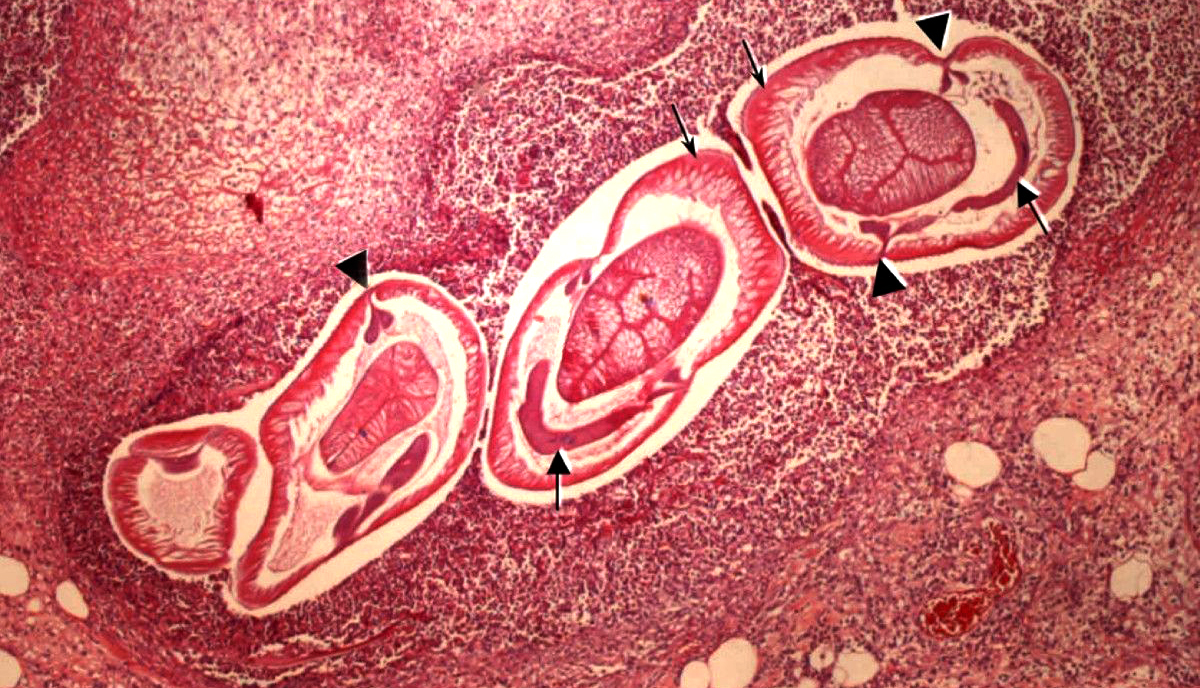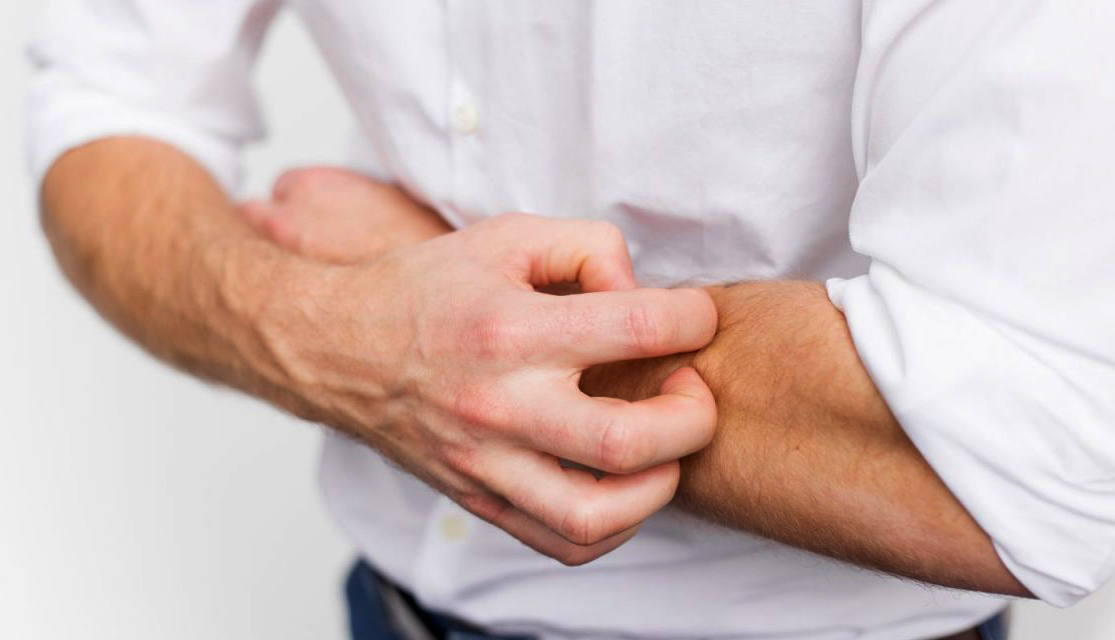[et_pb_section bb_built=”1″][et_pb_row][et_pb_column type=”4_4″][et_pb_text _builder_version=”3.13.1″]
Anisakidosis is the disease caused by the larvae of small round worms with an unsegmented body, and a whitish, almost transparent color of the Anisakidae family.
It is known as anisakidosis to infection by any member of the family Anisakidae and anisakiasis to the infection in particular by some worm of the genus Anisakis.
When a raw fish is ingested or that has not been sufficiently cooked, the larva of the worm, still alive, can penetrate the organism and fix itself on the walls of the digestive tract. The infection also occurs when smoked fish is consumed, dried or in vinegar.
The most common symptoms of anisakidosis occur at the digestive level due to the presence of the worm in the stomach or intestine. In addition, the infection can often trigger allergic reactions similar to those caused by shellfish. In rare cases, the worm can migrate out of the digestive tract causing complications in the abdominal or thoracic cavity.
Anisakidosis usually affects the stomach and manifests itself acutely, usually between 1 and 12 hours after ingestion of the parasitized and undercooked fish. There is significant pain located in the upper abdomen along with nausea, vomiting and some tenths of fever. Sometimes a rash may also appear. The acute symptoms disappear in a few days but the infected persons may present vague abdominal discomforts such as nausea and occasional vomiting for several weeks or months. These symptoms can be confused with those that would produce a gastroduodenal ulcer.
Occasionally, the infection is localized in the intestine, causing intermittent or constant abdominal pain that appears 5-7 days after the ingestion of the parasitized fish. In rare cases, the parasite can cause intestinal obstruction or, exceptionally, intestinal perforation or peritonitis. It is also exceptional that it leaves the digestive tract, but it can happen. In these cases it can give masses in the abdominal cavity or in the thoracic cavity, or affect different organs such as the liver, the pancreas, the ovaries, etc.
In any case, if you begin to notice some of the symptoms described in the previous sections go to a hospital so they can perform the corresponding tests and the specialist who treats you will prescribe the most appropriate treatment in your case. Remember that medications must always be prescribed by a doctor or allergist, this way they will be effective and other derived problems will be avoided.
Prevention is the key to reducing the risk of anisakis infection. Therefore, when buying and consuming fish, a series of recommendations must be taken into account:
- Do not buy fish that is commercialized inside boxes that contain water or ice.
- Check that the food is presented in good conditions, with a pleasant appearance (appropriate smell and color).
- Request that you do not have viscera, or eviscerate it as soon as possible, either at the store itself or upon arriving home.
- Make sure that those establishments that distribute fish to consume smoked, marinated, pickled, salted, in vinegar, raw or semi-cooked, indicate that they have previously frozen it.
- Do not forget that it is not possible to eliminate the Anisakis with vinegar.
- Nor can salt effectively eliminate it, unless it is used at high concentrations and for a prolonged period of time.
Always take care of your health with a unique and efficient service. Visit Pharmamedic.
[/et_pb_text][/et_pb_column][/et_pb_row][/et_pb_section]







